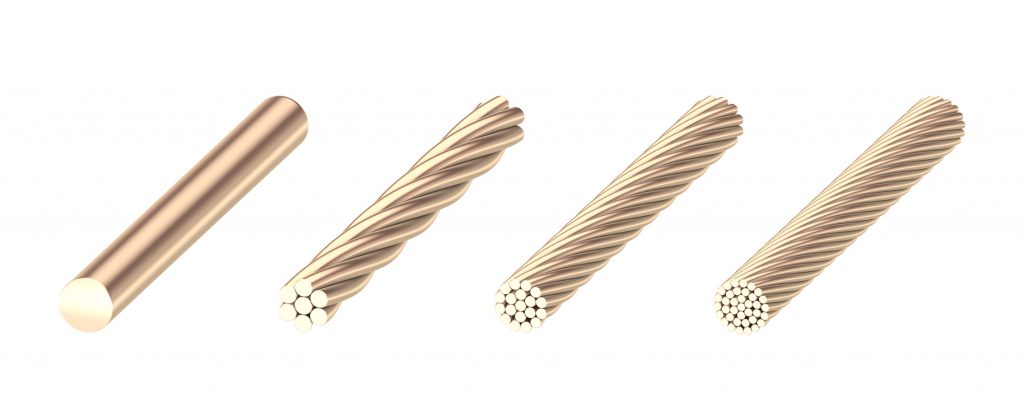The fairytale of the very finely stranded wire
igu-blog-adm | 17. March 2020

“The stranded wire must be very fine, otherwise it won’t hold in the chain” or “In the robot cable I need a class 6 conductor” are statements that very often heard from users. This statement is usually preceded by a core rupture, which led to a machine standstill. This often resulted in loss of production or expensive repair costs.
What is a stranded wire anyway?
A conductor is the part of a core that is responsible for the current flow. In other words, the copper is in the middle, covered by the insulation so that the current does not reach the adjacent cores. If the conductor consists of more than one wire, an expert refers to it as a stranded wire. Several wires therefore form a strand. The stranded wire wrapped in insulation again represents a core.
There are different classes of conductors
The different applications for which cables are used inevitably have different requirements in terms of durability in motion. Naturally, a buried cable is moved much less often than a measuring cable in physics classes. Consequently, the conductor must be of different softness to meet factors such as haptics, connection technology, processing and also costs.
The IEC / DIN EN 60228 (VDE 0295) divides the conductor in four classes in order to roughly classify how “soft” the conductor should be. The criteria for this are the single wire diameter and the number of single wires. This means that we can implement a conductor nominal cross section (important for the current flow) by various means. It can be made of one solid wire or consist of many small wires, which ultimately have the same total area.
The following classification is assumed:
- Class 1: Single wire
- Class 2: Stranded (multi) wire
- Class 5: Finely stranded (fine-wire)
- Class 6: Very finely stranded
These conductor classes were created to give the user a rough classification of mobility. This is completely sufficient for simple movements.
These conductor classes were created to give the user a rough classification of the movement. This is completely sufficient for simple movements.
Conductor class in continuous motion applications, the energy chain or on robots
It is obvious that it should not be a solid conductor, but the conductor must not be too fine either.
We have found out in countless tests that the wire of the strand must not be too fine, as it stretches in the outer area of the core when bending due to the tensile forces. If the bend is removed again, small wire loops are created because copper does not contract again. As a result, more and more of these wire loops are created by the recurring movement. Eventually the core breaks at this point. The ideal construction for the movement is not the one with the thinnest wire but the one where the wire thickness is matched to the respective conductor nominal cross section (e.g. 0.5mm², 0.75mm², 1.0mm² or 1.5mm²).
Since we install the right conductor in the core for you, you do not need to specify the conductor class with us. Tell us about what your cable should be able to do mechanically and we will find the right product for you from the catalogue range. It is best to use the online chainflex price check here:

